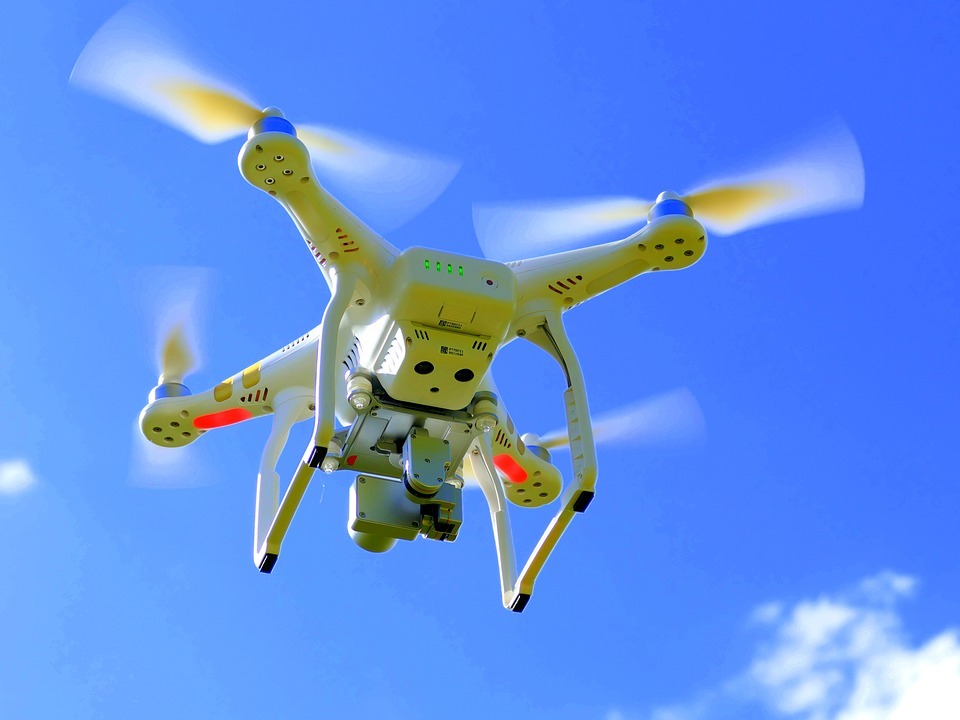When you hear drones, what picture comes to your mind? Is it a quadcopter? Most people are starting to think that all drones are quadcopters since this is the most popular design nowadays. Actually, drones or unmanned aerial vehicles (UAV) can be anything from a remote-controlled airplane, helicopter or quadcopter. But why did the quadcopter design became so popular? Why is it most preferred by manufacturers of small drones?
One of the main reasons for this is the quadcopters’ mechanical simplicity. In other words, its mechanism for take-off and maneuvering is simpler compared to other drone styles. A conventional helicopter, for instance, needs the main rotor blades to adjust the pitch as they spin to vector the helicopter’s thrust, which needs to combine with the movement of the tail rotor. This cyclic-pitch mechanism that helps a helicopter fly and maneuver is complicated, thus, making it more expensive.
Quadcopters, on the other hand, uses four propellers connected to four motors, so there is a single moving part for each of the four props. These links together to form a single, moving part, which makes it simple and straightforward. Because of this, plus its power semiconductors and high-power density electric motors, quadcopter drones are very easy to operate and control.
Since the propellers are connected to every one of the four motors, quadcopters have smaller blades. This has a safety benefit because if the quadcopter falls mid-air or hits something, it becomes less destructive.
So, if the quadcopter drones are simple and easy to operate, why hasn’t it been used as a means of transport like the helicopter? It’s because if you scale things up, it will be more cost-efficient and simpler to have a single complex mechanism rather than having four separate, simple mechanisms.
Another thing is that quadcopters are less stable than helicopters. It may not seem like it at first, since you’ve probably seen a helicopter that tries to balance in the air, whilst you’ve seen a quadcopter drone flying with ease. In fact, quadcopters are so unstable that they need full, mandatory, electronic stabilization systems so that humans can fly them (while helicopters do not need these).
Let’s say we remove the electronic stabilization system. For the quadcopter to be stable, it needs to adjust the thrust produced by each of its propellers. If a propeller on one side produces more thrust, the quadcopter tilts on one side. Since it uses fixed-pitched props, the only way to balance the quadcopter and adjust the thrust is to speed up or slow down. But because the motors must adjust to speed up or slow down, there is an inevitable delay to the reaction of the quadcopter. Due to inertia, the quadcopter needs more time and energy to change the speed of the propellers. The slower response means lesser stability. If the same full electronic stabilization system were to be installed in equally-sided quadcopter and helicopter, you’d observe that the helicopter is more stable.
Quadcopters are not constructed for large-scale drones also because the bigger the propeller, the more energy it needs to change speed. So, to produce more energy, it needs larger motors (and since you need four, it would be very heavy and costly). In case of helicopters, which uses variable-pitch blades, a pilot must simply change the blade pitch to change thrust. Plus, a helicopter’s single, large rotating blade provides more gyroscopic stability. Helicopters are also more efficient. In an aerodynamic point of view, slower but larger spinning propellers are more efficient at flying than a group of small, faster-spinning propellers.
So, there you have it. A quadcopter is popular for small drones because it gives the benefits of mechanical simplicity and lesser cost for production than other drone types. But quadcopters can’t be used for large-scale transport because the mechanical simplicity becomes more of a burden (literally) once the size is increased, and it is less efficient as a means of transportation.
